本文由 VERTEBRAL 授权mooool发表,欢迎转发,禁止以mooool编辑版本转载。
Thanks VERTEBRAL for authorizing the publication of the project on mooool, Text description provided by VERTEBRAL.
VERTEBRAL:El Terreno社区花园和教育中心是在新冠肺炎疫情爆发期间启动的项目。该项目位于一座土壤肥沃、矿物质和石头丰富的山丘上,作为城市花园,这样的环境适合种植花卉、芳香植物和蔬菜。该项目的初衷是了解到孩童需要保持社会刺激,同时接受能使他们亲近粮食生产和可持续生活的环境教育。
VERTEBRAL:El Terreno is a community garden and educational centre that initiated during the Covid19 outbreack. The project is located in a hill rich with soil, minerals and stones allowing for an urban orchard to grow flowers, aromatic plants and vegetables. The origin of the project began when understanding that young kids had the need of maintaining social stimulation and simultaneously receive environmental education bringing them closer to the cycles of food production and sustainable living.
▼建在山丘上的花园 El Terreno is located in a hill
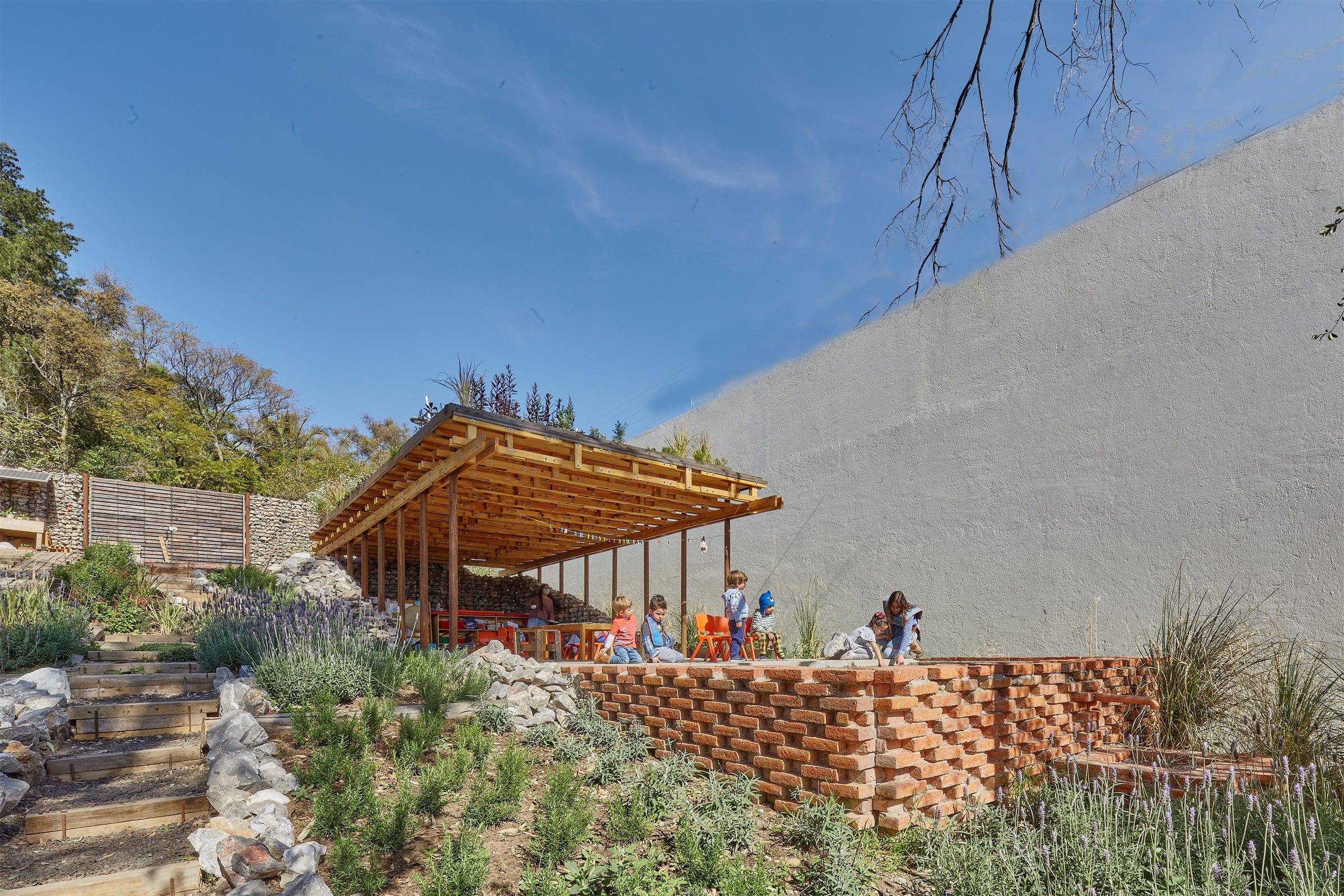
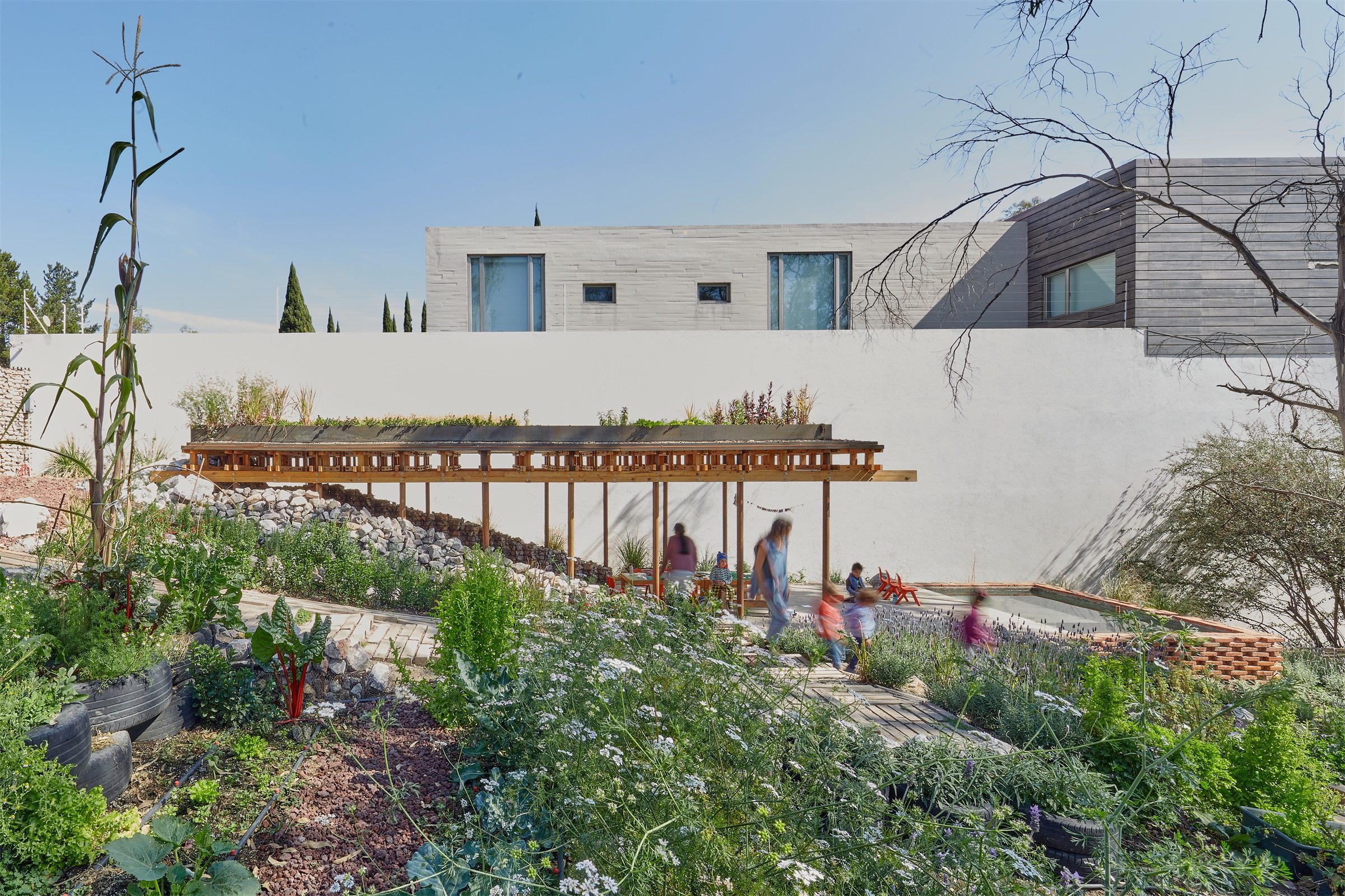
为了与项目目标相一致,VERTEBRAL用以前建筑中使用的回收材料建造了一个独特的亭子。 对于该公司来说,重要的是实现 100% 可回收的建筑,但对于这个特殊的项目,需要历经全新的流程,以独特的材料、模块和单元建造空间。墨西哥城的建筑师对El Terreno项目是这样描述的: “这个旨在实现多元化和多功能性的新空间在设计上尽力规避了用户的任何倾向性行为, 一个空间只有在用户参与并分享有关疗愈环境的新想法时才会变得有意义。”
To be congruent with the project VERTEBRAL built a pavilion uniquely from recycled materials used in their previous constructions. For the firm it was important to achieve a 100% recyclable building but also a space built with materials, modules and units uniquely thought out through new processes for this particular project. “We focused on avoiding any predisposition in the users when entering this new space intended for plurality and versatility. A space that can only gain significance with the users’ engagement to cultivating and share new ideas that point towards a healing environment.” That’s how the Mexico City–based architects describe El Terreno.
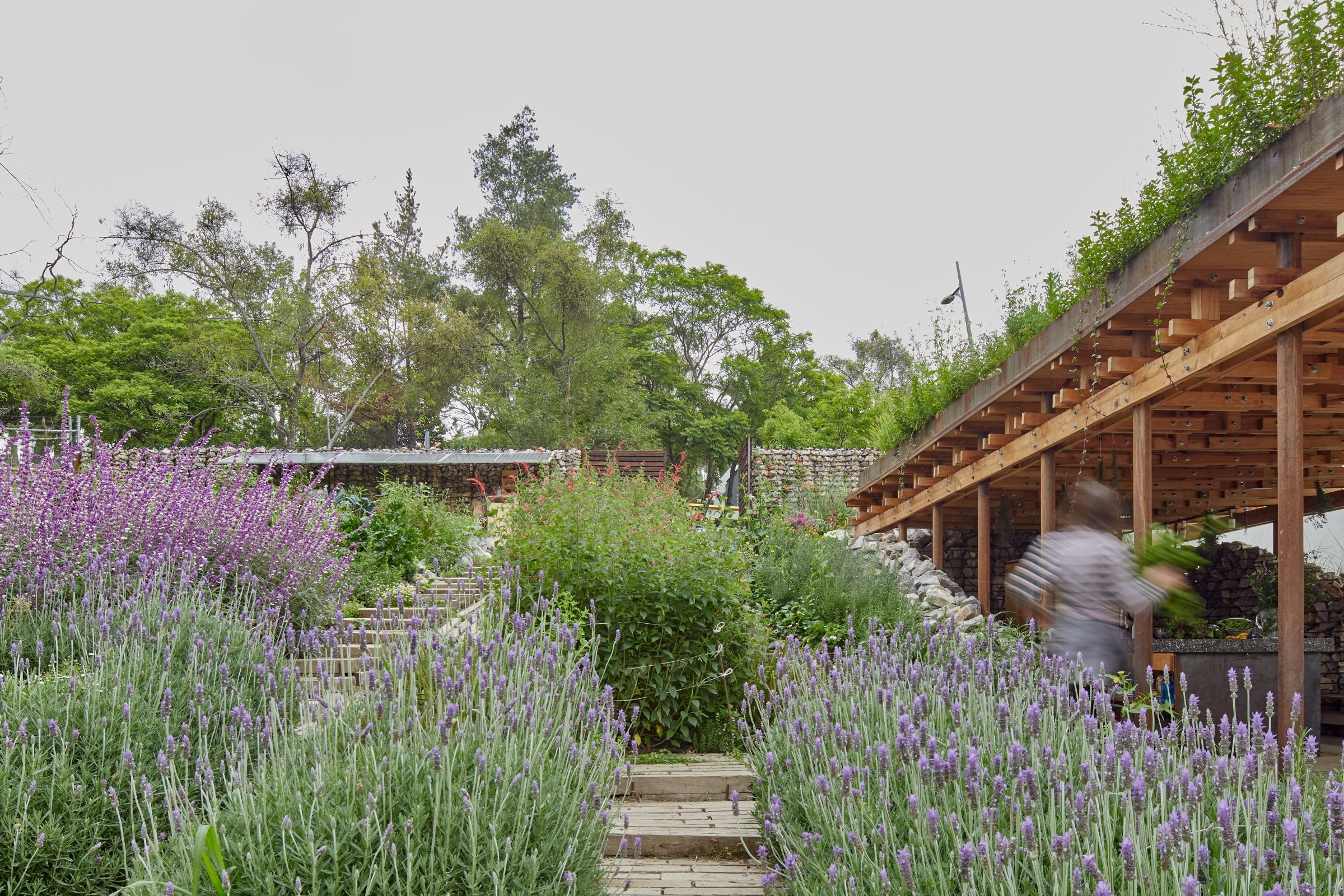

多功能亭镶嵌在山上,为花园提供了一个逐渐开放的空间。
The multipurpose pavilion is inserted into the hill allowing for a gradual aperture towards the garden.
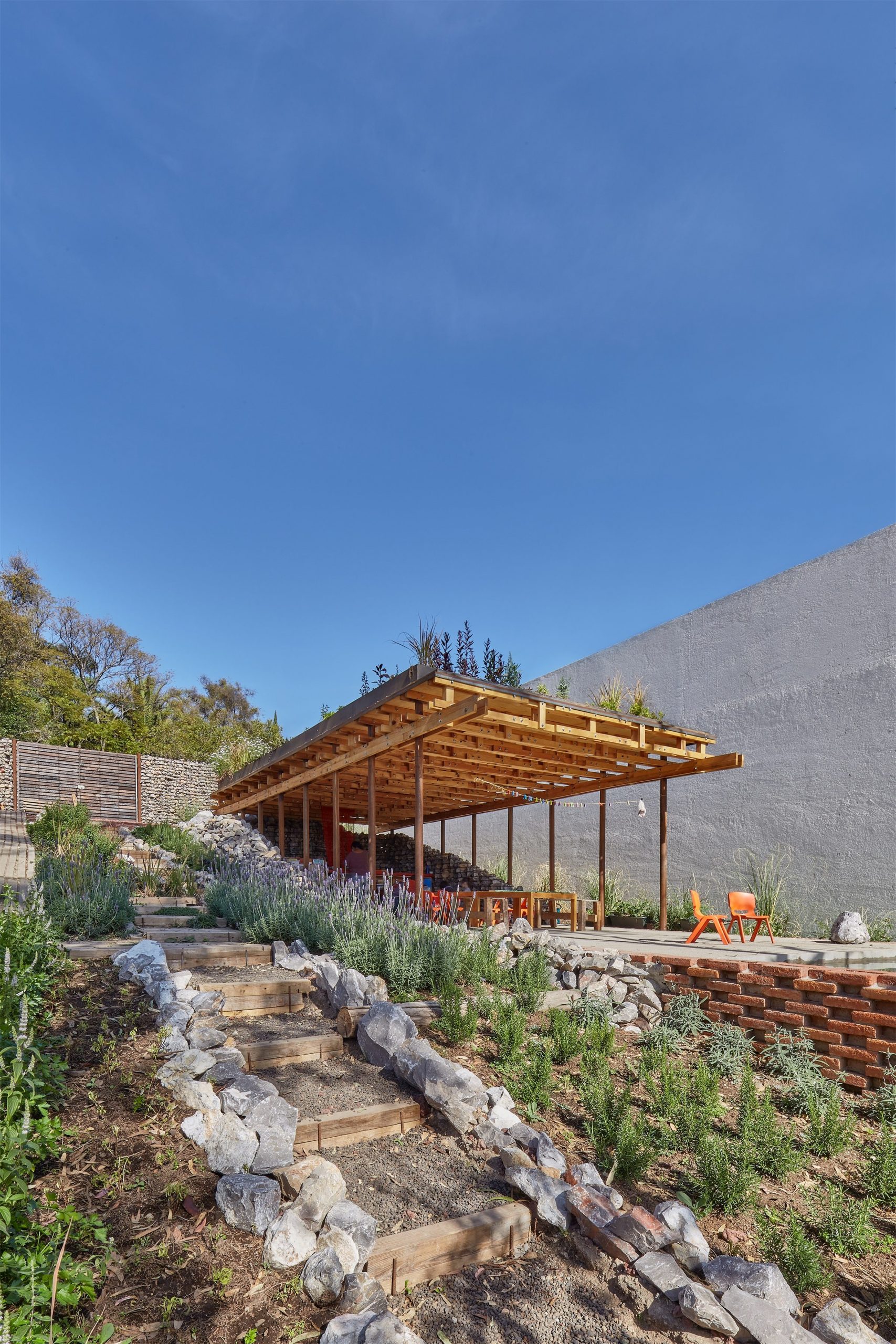
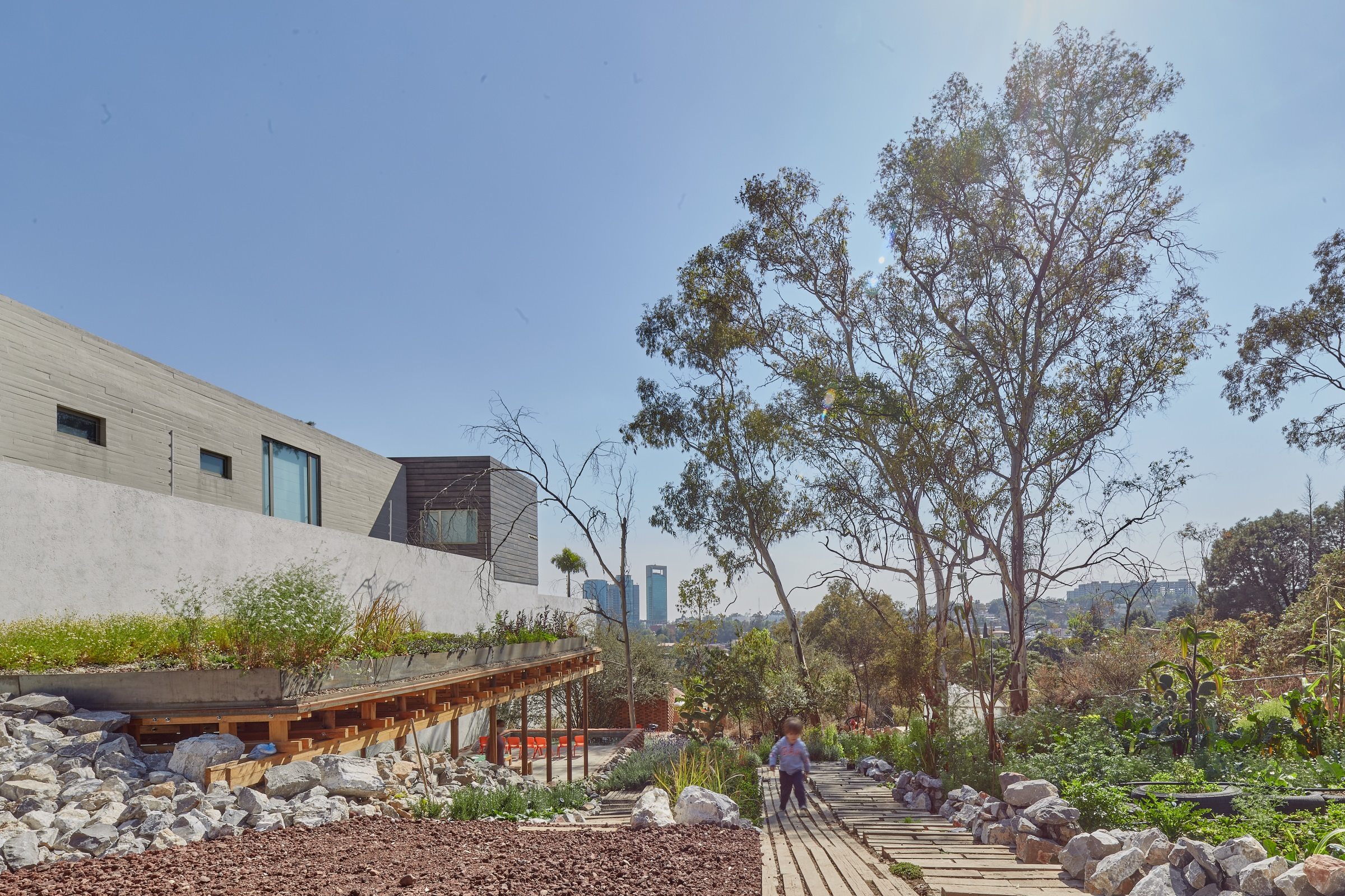
在现场挖掘时发现的铁段折弯后焊接到装满石头的围挡墙中。
Sections of iron rods were bent and welded into containing walls filled with stone found when excavating at the site.
▼围挡墙细节 The containing wall details
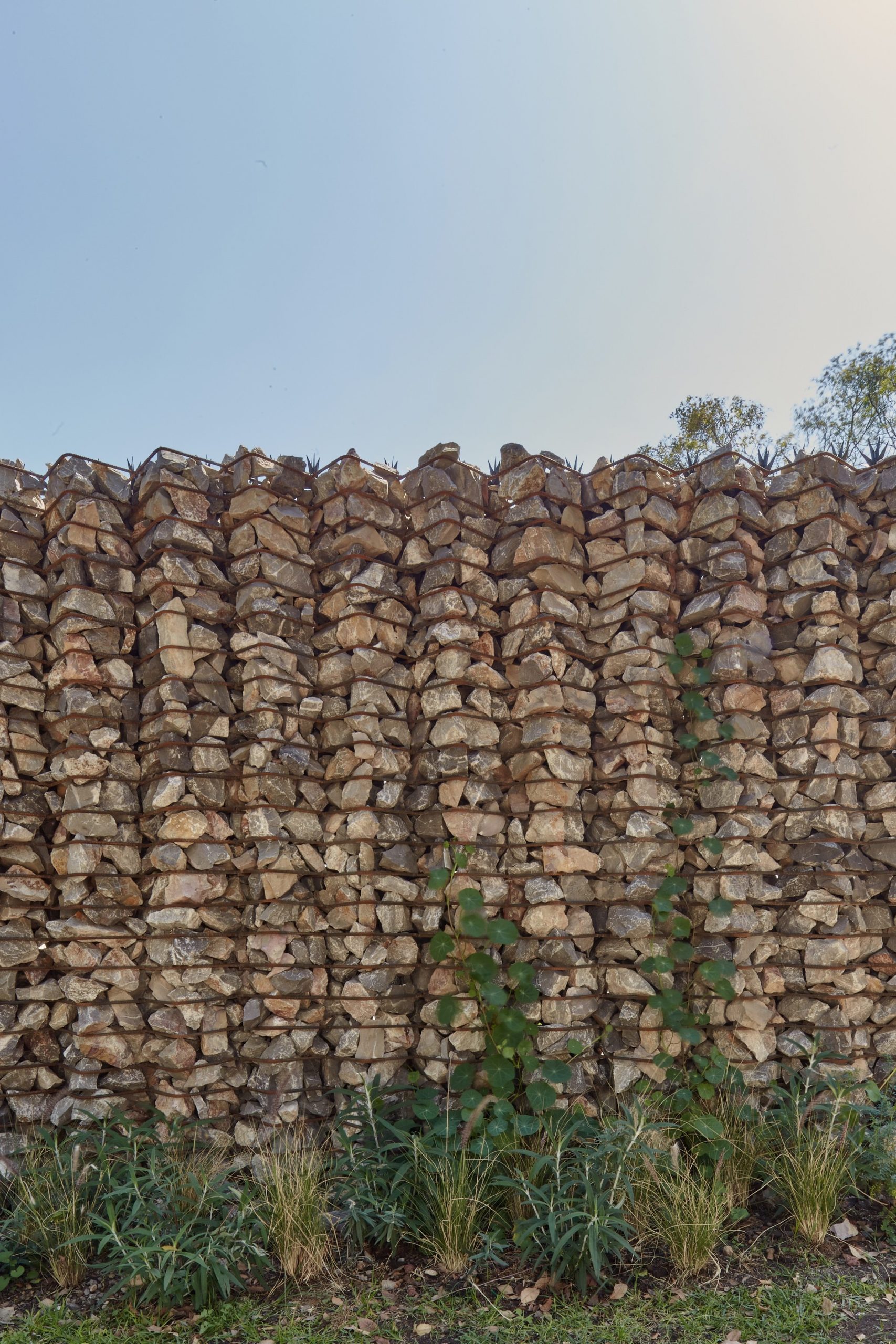
屋顶由四个不同的旧混凝土模板制成的木桁架组成,所有的桁架都由当地社区的志愿者组装。
The roof is composed by wooden trusses that come from old concrete formwork. Through only four different modules all the trusses were assembles by volunteers from the local community.

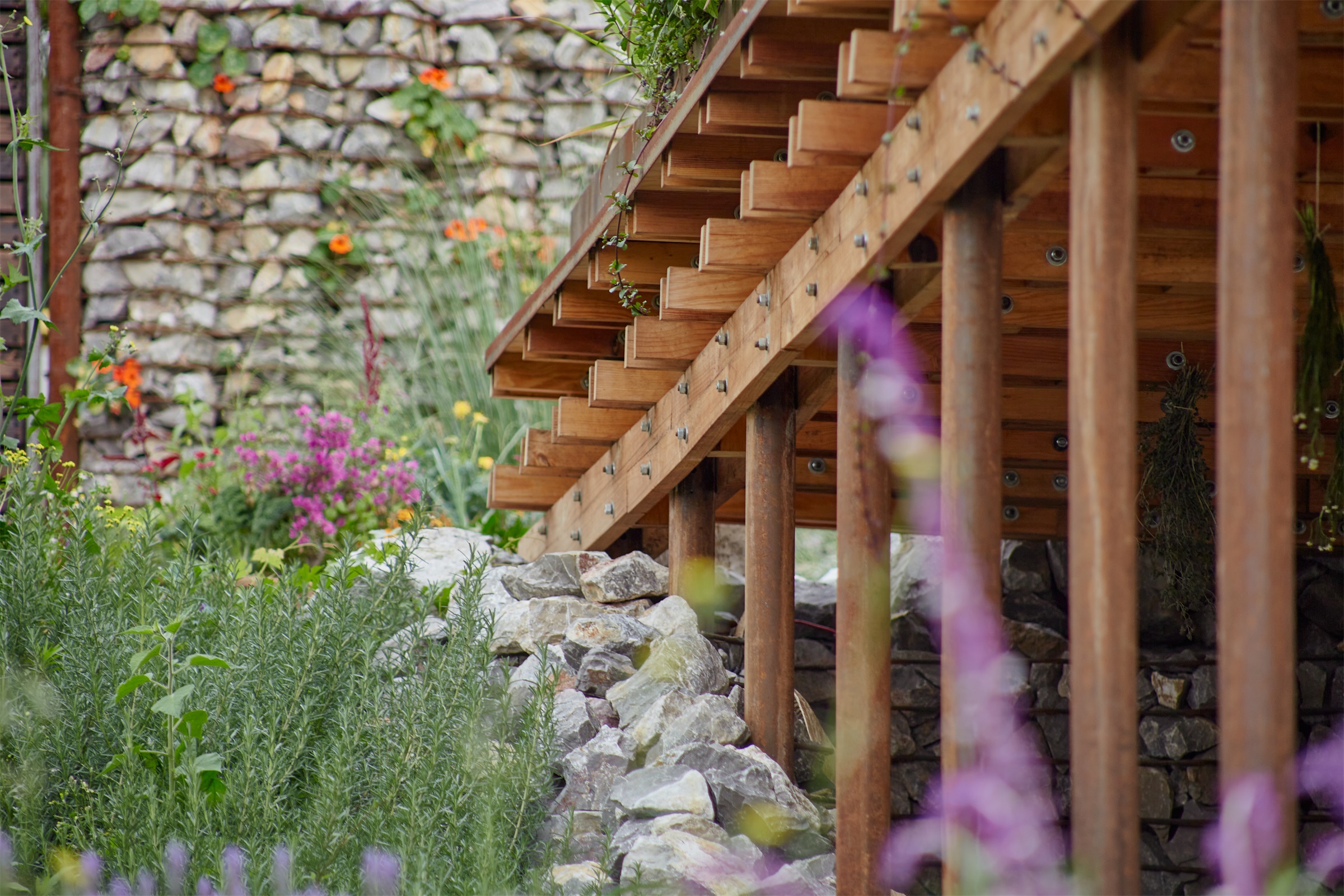
对于VERTEBRAL 来说,重要的是创造一个可以开展任何活动的空间,“严格定义的空间很快就会过时,相比之下,个性特征不明显和模棱两可的空间更具有弹性和多面性,其意义与目的可以在用户之间相互转换。” 这就是这家总部位于墨西哥城的公司对未来建筑的设想。
For VERTEBRAL it was important to generate a pavilion where anything could happen, “Spaces that are strictly defined rapidly become obsolete. By contrast, anonymous and ambiguous spaces are resilient and multi-faceted, allowing their significance and purpose to shift among users.” That’s how the Mexico City–based firm visualize the future of architecture.


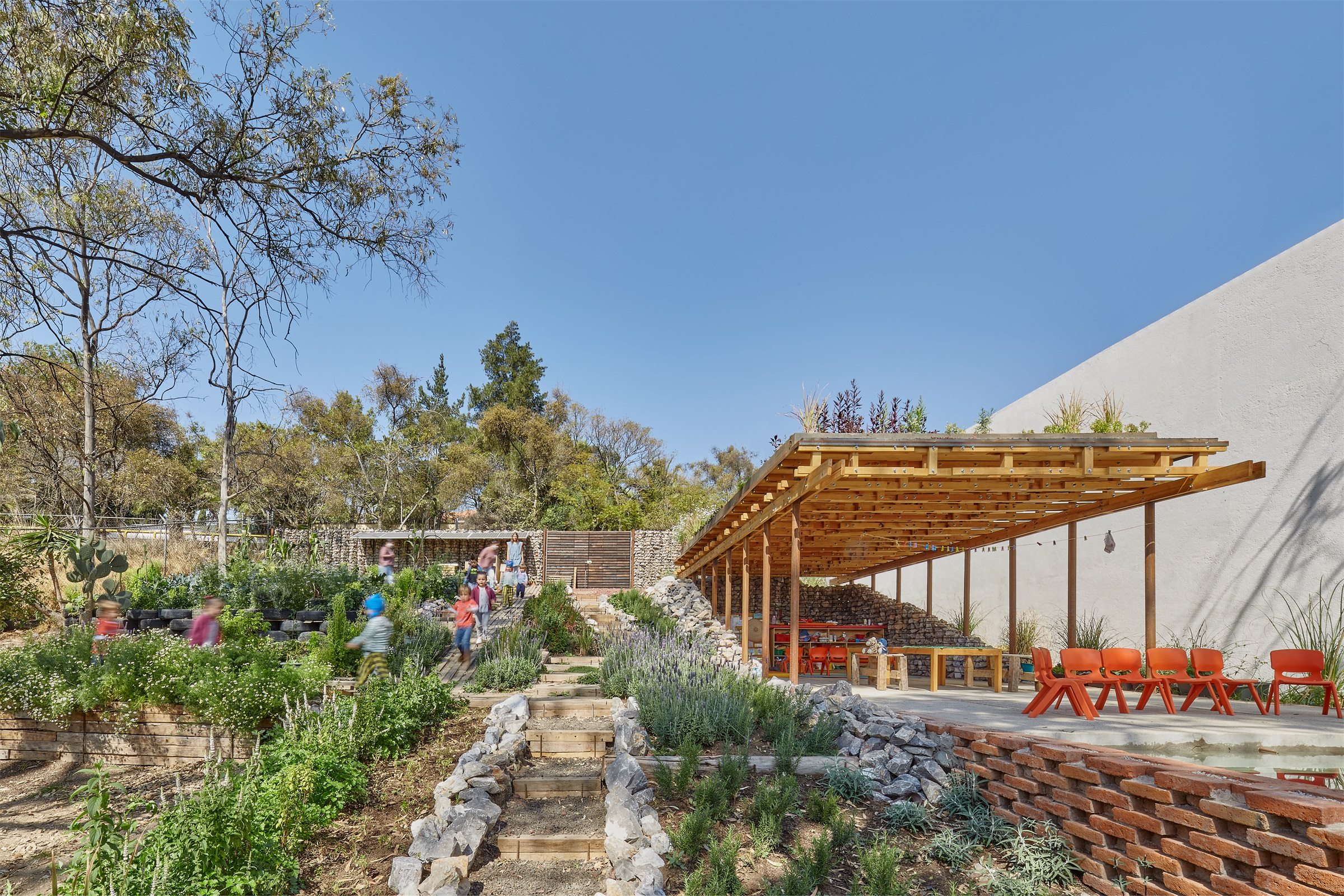

该项目的创始人Michelle Kalach 深入体验了脱离社会网、自给自足的社区生活。El Terreno将经过教育计划所培育出的特色植物和蔬菜出售给当地的咖啡馆和商店,成功地成为了一个经济稳定的花园。
The founder of the project, Michelle Kalach is deeply involved with self-sufficient communities that are off the grid. El Terreno manages to become a garden that is economically stable by selling endemic plants and vegetables that are cultivated through educational programs and then sold to local cafes and stores.
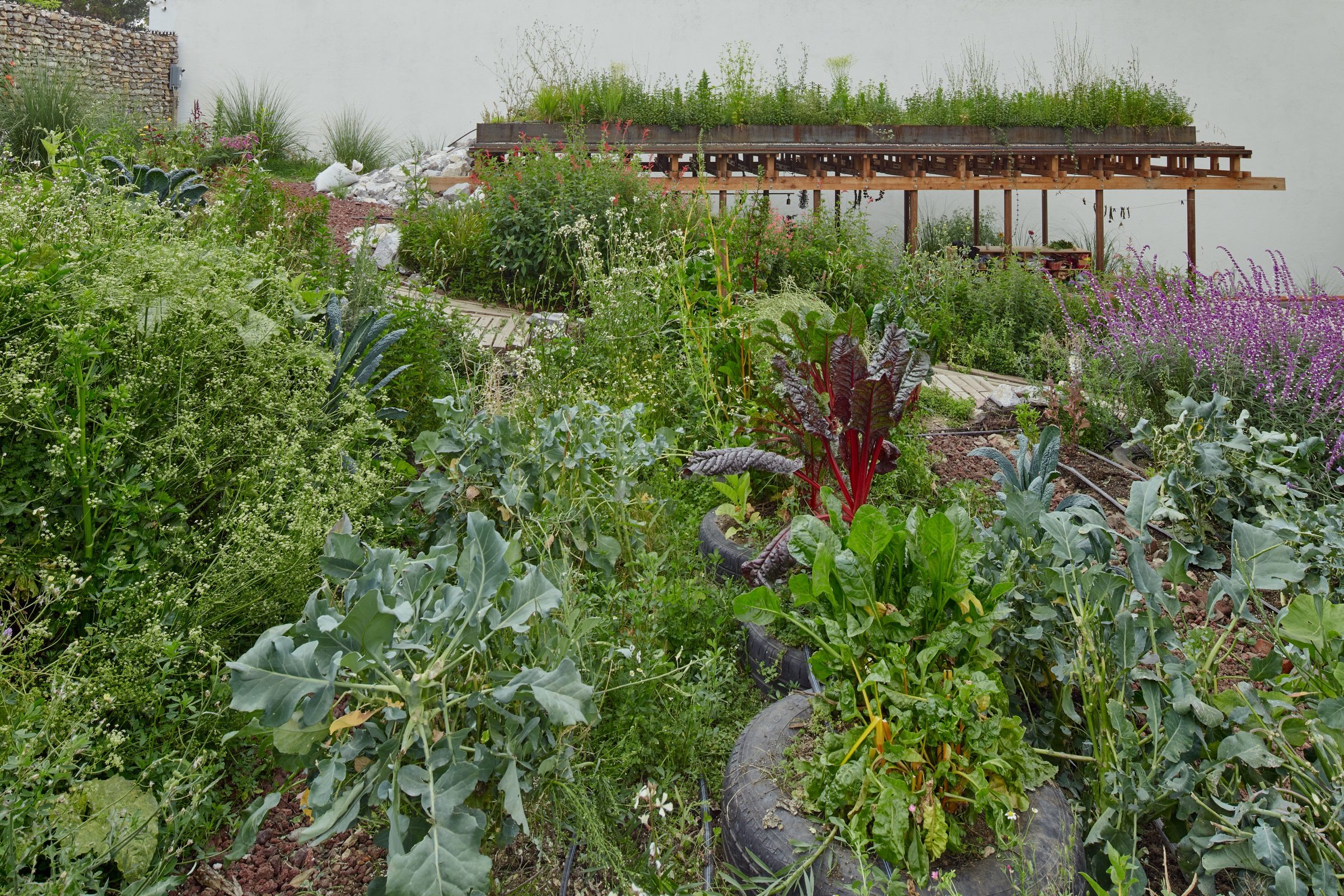


水的收集系统从亭子上方的绿色屋顶开始,穿过管道和结构柱,最后到达水镜,将水资源再泵回果园。场地使用的能源通过太阳能电池板收集,堆肥产生的废物成为花园的天然肥料。
Water is captured through a system that starts on the green roof of the pavilion, goes through pipes thar are also the structural columns, and finally arrives to a water mirror that pumps the resource back to the orchard. The energy used is collected through solar panels and the waste from composting toilets become natural fertilizers for the garden.
▼亭子上方的绿色屋顶用于收集雨水 Water is captured through a system that starts on the green roof of the pavilion
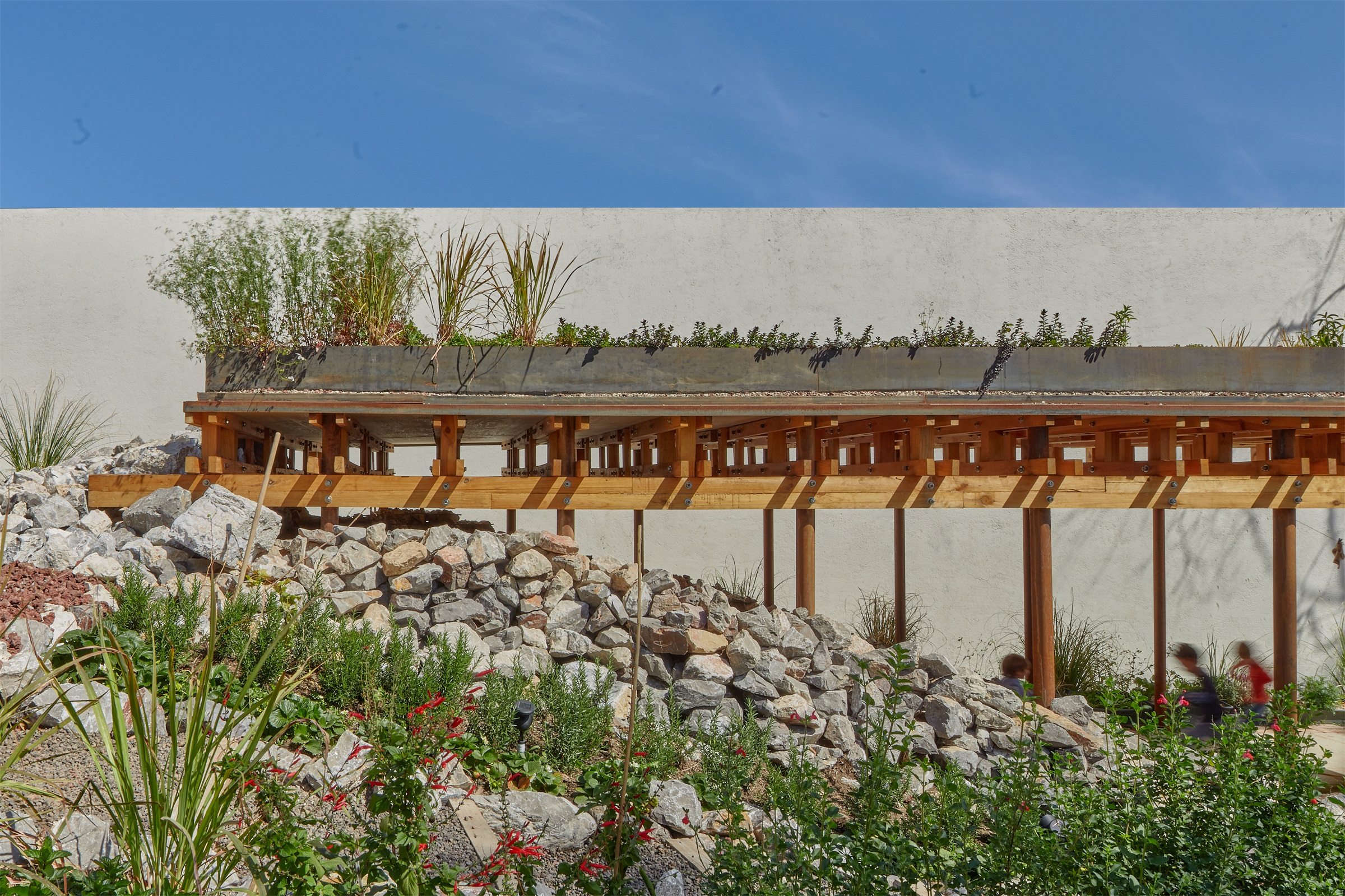


El Terreno是一个结合教育、可持续性和未来发展前景的典范空间,更重要的是它始终响应着人们当下的需求。
El Terreno is a space that was built as a model of how education, sustainability and design can harvest a bright future that is always responding to its immediate needs.
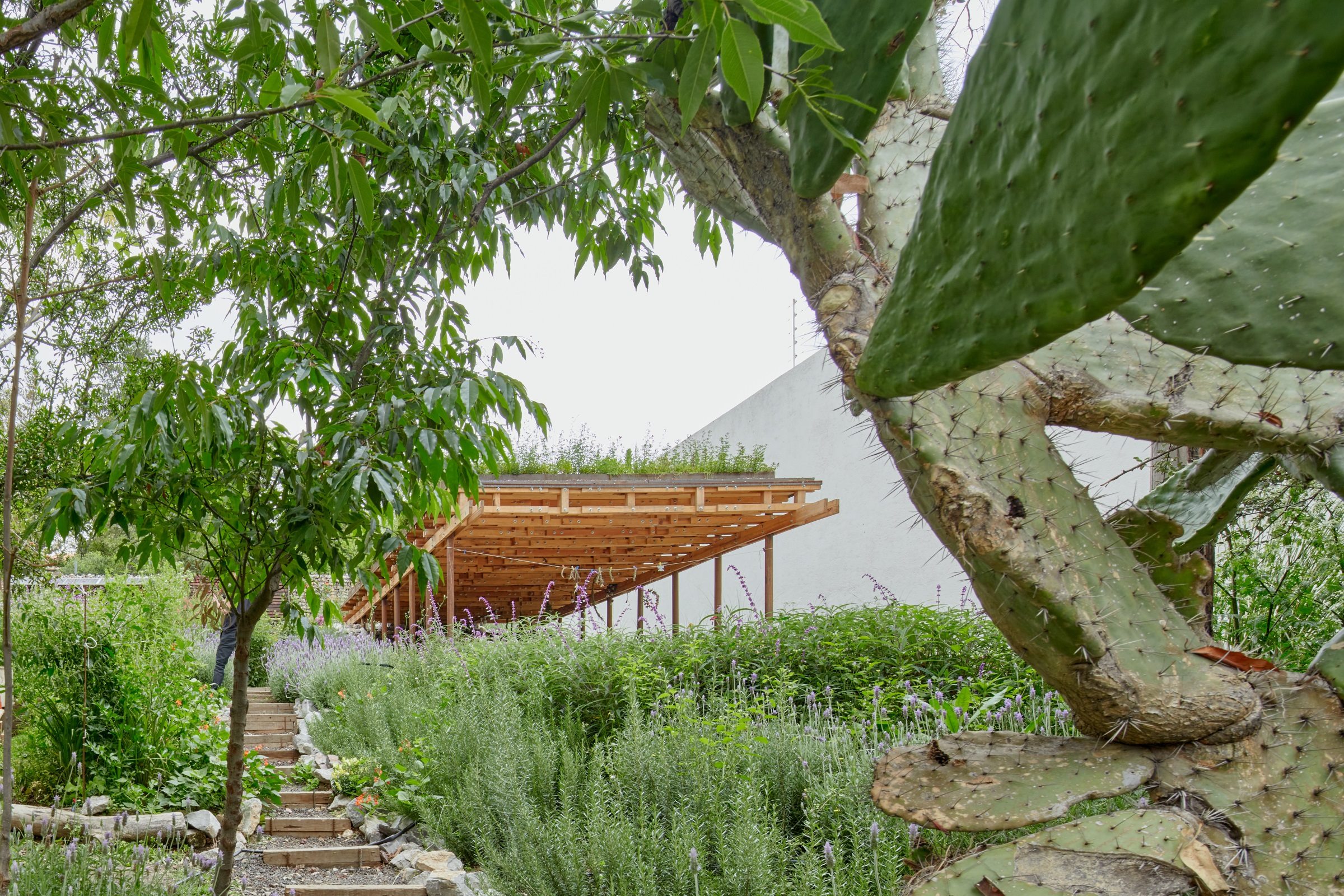
▼平面图 Plan
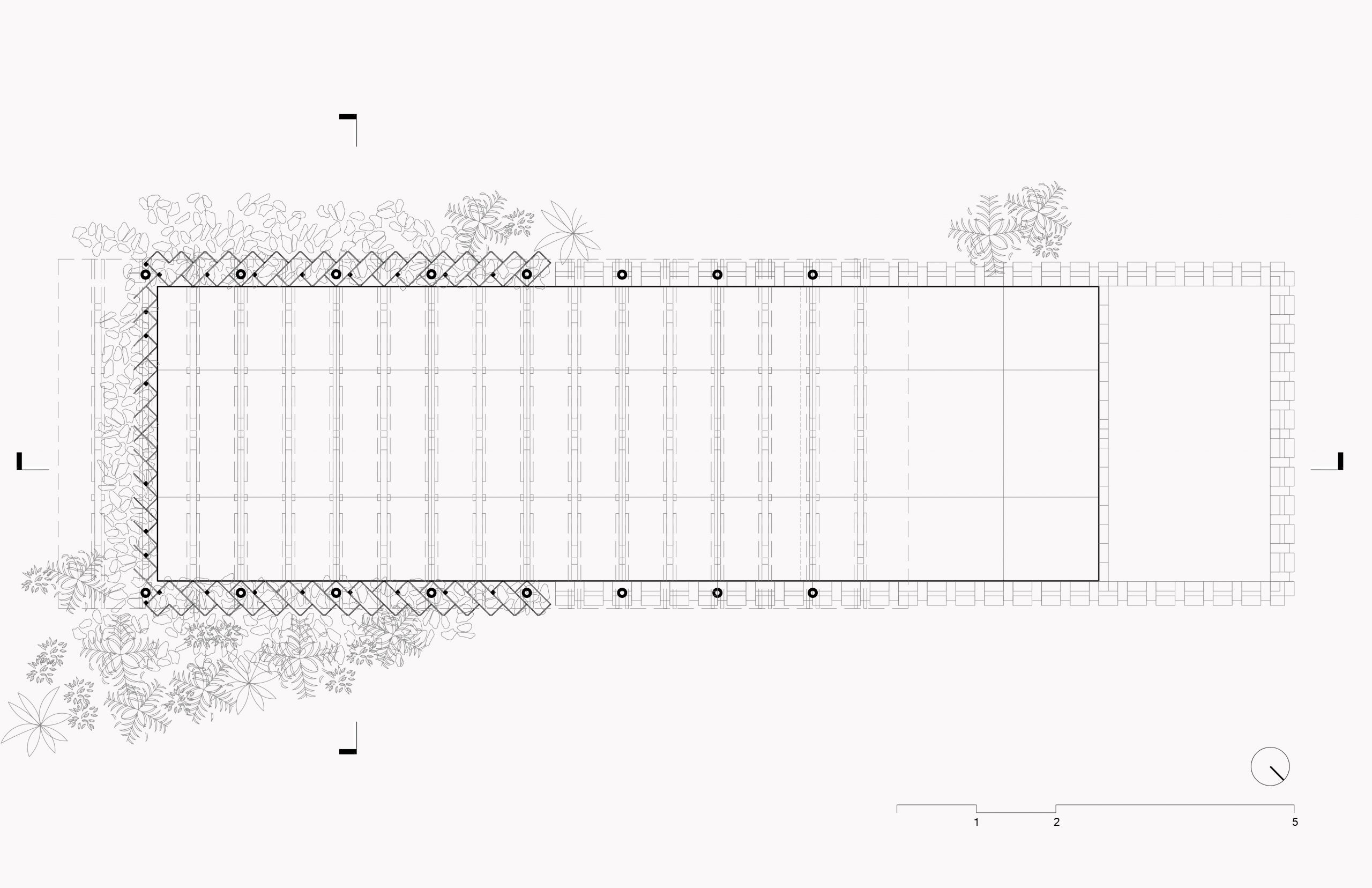
▼剖面图 Section
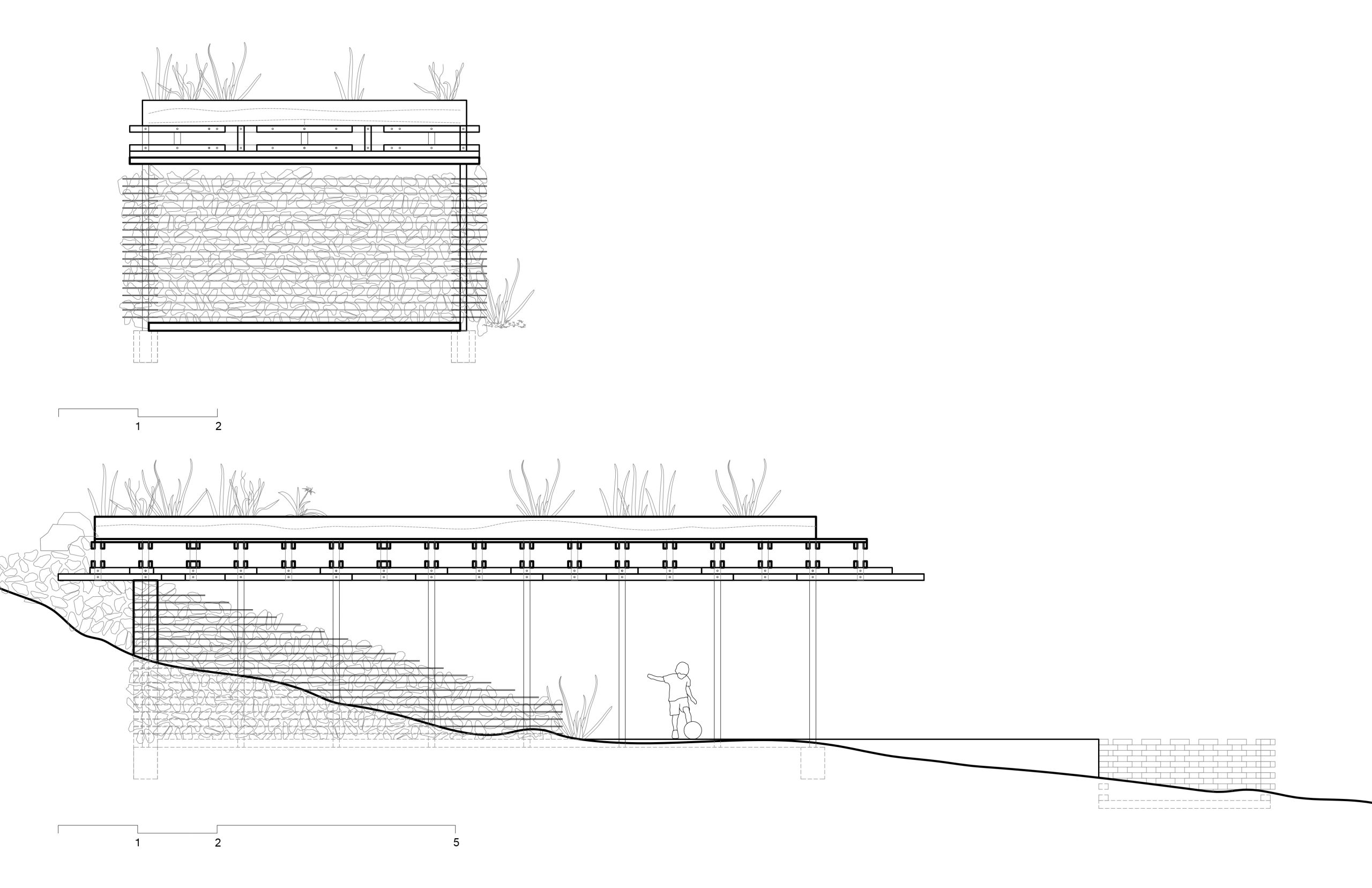
项目名:EL TERREN——城市社区花园和教育中心
设计和施工:VERTEBRAL
开始时间:2020年2月
完成时间:2020年4月
可持续性设计:Michelle Kalach
艺术总监:Fortuna Kalach
结构工程师:Ricardo Gavira
摄影:Ricardo de la Concha
Project Name:EL TERREN_Urban community garden and educational center
Design and Construction:VERTEBRAL
Start:FEB. 2020
Finish:April 2020
Sustainability Credits:Michelle Kalach
Art Director:Fortuna Kalach
Structural engineer:Ricardo Gavira
Photo Credits:Ricardo de la Concha
审稿编辑 HOU
更多Read more about: VERTEBRAL










0 Comments